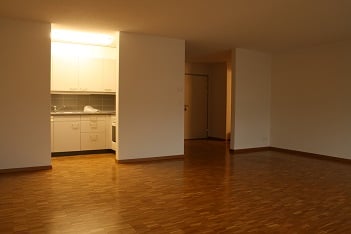Significantly increased demand is driving the seniors’ housing market to new heights of activity, CMHC says

In a new set of data releases, the Canada Mortgage and Housing Corporation (CMHC) announced that the vacancy rates in seniors’ residences saw slight drops in the three most important seniors’ housing markets of Quebec, Ontario, and British Columbia.
The CMHC’s regional Seniors’ Housing Reports provided metrics for two types of spaces: standard and non-standard spaces.
“Standard spaces, also referred to as independent living, are those occupied by a resident paying market rent and who does not receive 1.5 or more hours of care per day. A non-standard space is one in which the residents are receiving at least 1.5 hours of care per day, spaces being used for respite and non-market spaces,” the CMHC explained.
In Quebec, vacancies among standard spaces declined to 6.2 per cent in 2017, compared to 6.8 per cent in 2016. Over the same period, non-standard space vacancy dropped from 5.5 per cent to 5.0 per cent. Average rent was at $1,678 monthly for standard spaces, and $3,200 for heavy care spaces.
“The progressive decrease of the vacancy rate in private retirement homes reflects sustained demand. But while 18 per cent of Quebecers aged 75 years and older live in a retirement home, the others opt for alternative forms of housing. It will be critical for us to understand the residential trajectory of baby-boomers as it will be a determining factor for the future of the housing sector and for society as a whole,” CMHC Quebec regional economist Kevin Hughes said.
On the other hand, Ontario saw vacancies for standard spaces drop to 10.4 per cent in 2017, and vacancies for all spaces to 10.3 per cent. Average rent for standard spaces rose to $3,526.
“The overall vacancy rate in Ontario reached the lowest level since 2001 as demand for seniors’ housing has outpaced supply. Vacancy rates dropped in more than half of the Ontario markets in 2017. Many areas showed signs of pent-up demand due to greater demand growth than growth in supply,” according to Jean Sebastien Michel, CMHC principal, market analysis (Ontario).
Meanwhile, overall vacancy rate for independent living spaces in B.C. seniors’ residences fell by almost two percentage points year-over-year to 4.5 per cent in 2017.
“While rising demand and operating costs have increased monthly rents, large price increases in the resale market over the past few years have supported some seniors’ ability to move into independent living and heavy care spaces,” CMHC market analyst (B.C.) Keith Stewart stated.
The full study can be accessed here.
Related stories:
Retiree borrowing rate on the rise—report
Formidable debt levels preventing more and more seniors from owning homes -study
The full study can be accessed here.
Related stories:
Retiree borrowing rate on the rise—report
Formidable debt levels preventing more and more seniors from owning homes -study



